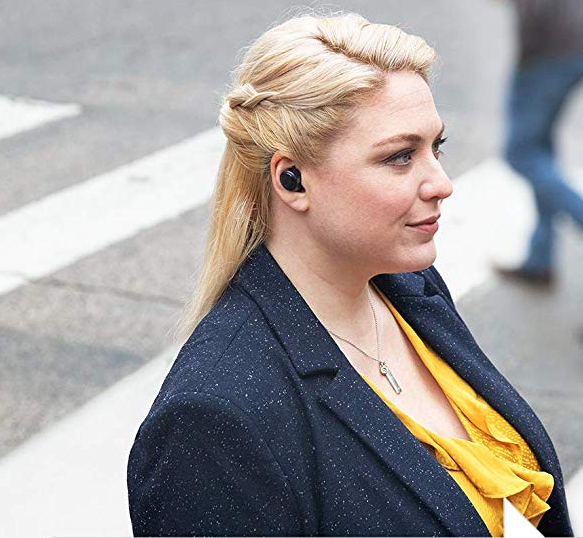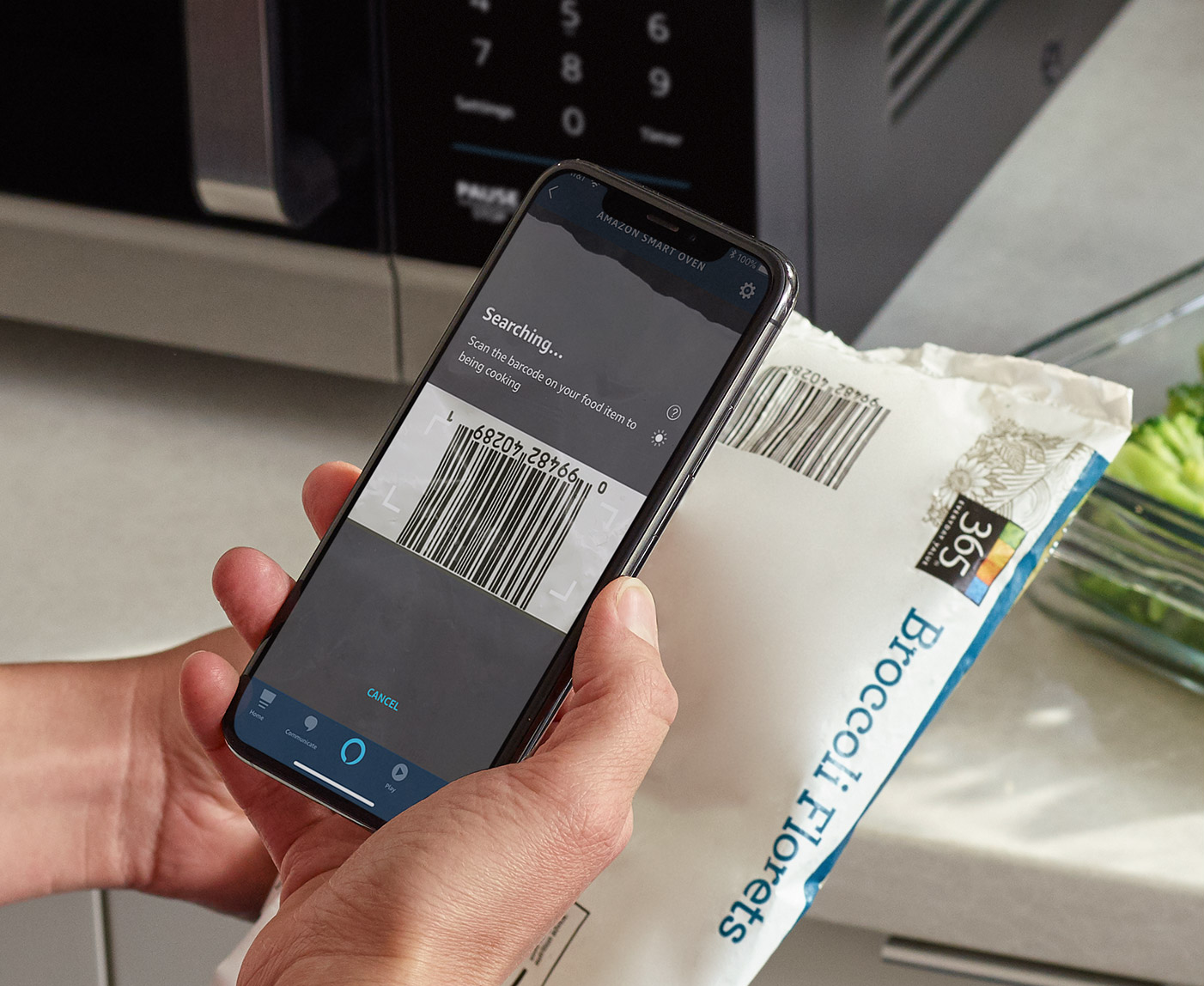The New Alexa Devices That Could Revolutionize Your Restaurant
Lenny DeFranco
5 min read
Nov 20, 2019

Lenny DeFranco
5 min read
Nov 20, 2019

The Alexa universe is growing. At its annual release event last month, Amazon unveiled a number of new devices and features that will expand voice technology applications for existing and new users. For restaurant operators, some of the new devices hint at the exciting potential of incorporating Alexa functionality into the in-service experience. At this point in its adoption, operators may wonder how voice technology, which tends to be associated with novel use cases like turning on the lights or voicing today’s weather forecast, could help manage service during a fast-paced dinner shift. But as restaurant software evolves, GMs will increasingly be able to use it to weave real-time data and analytics into service in a way that complements existing hospitality.
Voice technology, when applied correctly, is going to be revolutionary in the dining room. Imagine being able to call up critical guest data—like notes on a severe peanut allergy or a 10th anniversary celebration—right on your dining room floor, without having to look down at a device or screen. A hands-free way to manage service without pausing what you’re already doing. SevenRooms x Alexa: Bringing Guest Data To The Table from SevenRooms on Vimeo. Introducing voice technology into any type of restaurant operation generally improves service. In quick-serve restaurants, for example, drive-thru customers will soon be speaking their orders to computers instead of humans. But why stop there? Front-of-house managers in fine dining will also be able to meaningfully improve service with easier, faster access to data about guests’ preferences, allergies, historical spend, and other identifying characteristics. Paired with software that can deliver that data at the right time, voice technology will help you layer that information seamlessly into your service. Once you meet a guest, you’ll know them no matter when or where they visit you. Making guests feel at home is a powerful way to encourage return visits. This is the promise of using Alexa in your restaurant: far from any smart-home gimmick, voice technology connects busy operators to the data that makes their service special, turning one-time customers into regular guests.
Amazon has its sights on an Alexa-enabled device in every home and workplace. Below, we showcase our top picks from the recently-released devices that we believe could be most impactful in the dining room. (Full list available via TechCrunch here.)
 The experimental Echo Loop might have more utility in a restaurant than in any other setting. This simple, black titanium ring pairs with your smartphone and summons Alexa with the press of a palm-facing button. You speak into the ring, and the ring speaks back. In the front-of-house, it could make access to information happen more quickly, while appearing unassuming to a guest. This would be a great fit for restaurants that want to benefit from voice technology-enabled servers, but where the aesthetic and style of waiter is an important part of the brand.
The experimental Echo Loop might have more utility in a restaurant than in any other setting. This simple, black titanium ring pairs with your smartphone and summons Alexa with the press of a palm-facing button. You speak into the ring, and the ring speaks back. In the front-of-house, it could make access to information happen more quickly, while appearing unassuming to a guest. This would be a great fit for restaurants that want to benefit from voice technology-enabled servers, but where the aesthetic and style of waiter is an important part of the brand.
 Amazon joins the wireless earbud market with this Bose-designed hardware. The Buds are intended to make Alexa your primary interface for music, calling, and texting, but they could easily be repurposed to facilitate communication across a busy dining room or discreetly asking Alexa for help. Imagine a waiter inputting an order by repeating it using natural language to Alexa. Imagine a GM going about their business as usual, periodically checking in on the night’s performance or asking Alexa if the upcoming private dining room reservation includes any food allergies. One downside is their shareability: staff members may not want to share in-ear buds amongst one another. Combined with their relatively high cost, this could be prohibitive for a restaurant that wants to equip everyone on the floor. But for venues that want to outfit only a GM or key floor managers with voice technology, Echo Buds is a viable solution.
Amazon joins the wireless earbud market with this Bose-designed hardware. The Buds are intended to make Alexa your primary interface for music, calling, and texting, but they could easily be repurposed to facilitate communication across a busy dining room or discreetly asking Alexa for help. Imagine a waiter inputting an order by repeating it using natural language to Alexa. Imagine a GM going about their business as usual, periodically checking in on the night’s performance or asking Alexa if the upcoming private dining room reservation includes any food allergies. One downside is their shareability: staff members may not want to share in-ear buds amongst one another. Combined with their relatively high cost, this could be prohibitive for a restaurant that wants to equip everyone on the floor. But for venues that want to outfit only a GM or key floor managers with voice technology, Echo Buds is a viable solution.
 Chances are the humans in your kitchen already coordinate their cooking, plating, and timing using their voices. What’s so crazy about a microwave that works the same way? At the moment, the Amazon Smart Oven is a consumer product, and it’s not clear if the appliance would be ready for the rigors of a professional kitchen. But the concept of an oven able to consistently execute many different types of heating, all responsive to voice commands, doesn’t seem so far-fetched. As automation extends further into restaurant operations, something like the Smart Oven seems inevitable for your back of house.
Chances are the humans in your kitchen already coordinate their cooking, plating, and timing using their voices. What’s so crazy about a microwave that works the same way? At the moment, the Amazon Smart Oven is a consumer product, and it’s not clear if the appliance would be ready for the rigors of a professional kitchen. But the concept of an oven able to consistently execute many different types of heating, all responsive to voice commands, doesn’t seem so far-fetched. As automation extends further into restaurant operations, something like the Smart Oven seems inevitable for your back of house.
As of this summer, Alexa supported seven languages, but only one at a time. With this latest release, Alexa can now operate with two at once. The functionality will be limited initially—the US version is only able to work simultaneously in English and Spanish—but Amazon plans to roll out robust multilingual functionality around the world soon. For restaurants looking to streamline operations between staff members who speak different languages, multilingual mode has immense promise. Voice technology would no longer be for English-speaking servers and managers, even if your service is conducted primarily in English. The introduction of multilingual mode attests to one of the main benefits of investing in voice tech: with updates and improvements constantly launching, it sets up your processes to grow in capability and value over time.
 The goal of integrating Alexa into your operations is to have effortless access to data: on your guests, your inventory, your reservations, your margins, on any of the countless pieces of information you might need to check at any given moment. Achieving this requires hardware, paired with software, that effectively becomes invisible. Frames is a hassle-free way to keep Alexa at the ready throughout the day. The device itself is a pair of unisex glasses with an embedded microphone, speaker, and touch sensor. It lets the wearer talk with Alexa when needed, without having to wear a conspicuous object. Most importantly, Frames let staff maintain focus on their guests while accessing useful data. By bringing voice technology into service without taking attention away from the interaction itself, Frames lets restaurants keep their technology invisible—which is how it should appear to guests.
The goal of integrating Alexa into your operations is to have effortless access to data: on your guests, your inventory, your reservations, your margins, on any of the countless pieces of information you might need to check at any given moment. Achieving this requires hardware, paired with software, that effectively becomes invisible. Frames is a hassle-free way to keep Alexa at the ready throughout the day. The device itself is a pair of unisex glasses with an embedded microphone, speaker, and touch sensor. It lets the wearer talk with Alexa when needed, without having to wear a conspicuous object. Most importantly, Frames let staff maintain focus on their guests while accessing useful data. By bringing voice technology into service without taking attention away from the interaction itself, Frames lets restaurants keep their technology invisible—which is how it should appear to guests.
One notable omission from this latest round of Amazon-produced hardware is a device capable of producing visualizations for a user. Hardware with this functionality does exist currently, such as Focals by North, which are smart glasses that project graphics onto the lens while also responding with Alexa’s voice. Whether Amazon decides to build this functionality internally remains to be seen. However, this application will have a huge impact on a restaurant’s ability to recognize guests and further apply technology like SevenRooms in the dining room to provide memorable guest experiences through high-touch service and hospitality..
However it’s presented and utilized, voice technology holds enormous promise for restaurants. When a GM is able to call up the necessary data on demand, they’re able to manage service with the assistance of real-time data without shifting their attention away from what matters most: the guest. Making this vision a reality is why SevenRooms, following an investment from Amazon’s Alexa Fund, debuted voice technology for in-service use by operators earlier this year, becoming the first hospitality technology company to bring that functionality into the dining room. As the technology advances, expect to see operators getting smarter about how they can drive revenue, and guests happier with the highly personalized service they’ll come to expect. To learn more about how SevenRooms can help you personalize in-service experiences using data, click here.